Sarah Gerdes's Blog, page 13
May 2, 2019
Avoiding weight gain while traveling
Traveling is a great thing, but it does have its consequences, weight gain being first and most obvious. I’m like that person who is stuck on an all-you-can-eat inclusive cruise line, except there’s nary a boat or ocean in sight. The world is my culinary oyster and I want the all-in, shooter version. No messing around with me and my food.
Straight up, I’ll confess my desire to maintain my weight while traveling is all rooted in vanity and money. First, I want to wear what I’ve brought on the trip, which is hard to do if my thighs increase like Christmas sausage being stuffed in casings. Second, I want to spend my hard earned (or saved) money on frivolous things, like purses that are meant to bulge, unlike my bathing suit. So, from my shameless-yet-helpful self to you, here’s how I keep my weight within 5 pounds of my starting point.

How I eat tiramisu…with two spoons…don’t come near me or I will spoon you!
Eat breakfast, every day, without fail
I’ll confess. After high school, I stopped eating breakfast. It wasn’t until the weight started to pile on did I look back in wonder at those glory-days and connected the dots. Mom would rise early, make oatmeal, eggs or some variation thereof. I’d be stuffed until lunch, and even then, not that hungry. In my late twenties, I worked out in the same Oakland Gym as a Mr. Olympian runner-up, who trained folks from all walks of life. I couldn’t afford him, so I did what any smart girl does, I chatted him up. He put it this way:
“I’d be out of business if everyone did one thing without fail: eat breakfast. Eggs and oatmeal.” The other thing he said is: “Eat every two hours to keep your metabolism cranking.”
2 eggs (anyway you like), whole, not just whites (“Only hard core body builders who don’t want a lick of skin skip the yolks,” continued Mr. Runner Up. “It’s just not healthy.”
1 cup steel cut oatmeal. I add a dollop of butter and either honey or natural (grainy) brown sugar and a little milk (or whipping cream. Real women use cream).
On the egg
The yellow is the fatty part, which actually keeps you full. My doctor repeatedly says: “God, or nature, whichever you prefer, created the perfect food in the egg. Why would anyone want to strip away one part?” I never knew bodybuilders and doctors had so much in common, but I digress.
As for the oatmeal, the steel cut oats are coarser and I’m a texture girl, so this works for me. Also, I completely fail at any food plan when I strip away the good stuff in life such as milk, butter etc. So I use the age-old “moderation-in-all-things” approach to life. I am full, satisfied and don’t have a bit of craving.
I was actually pleased to read that Patrick Vellner, the “second fittest person on Earth,” has eggs and oatmeal as well for breakfast. Read more about his diet here. It’s not just us lowly Authors and Olympians!

Steel cut oats in the U.S. but variations of this exist everywhere overeas
No fail lunch routine
Is lunch the biggest meal of the day, or a pitstop on the way to the finish-line called dinner? I’ve vacillated back and forth on this philosophical quandary until my brain hurts. The reality for my family and traveling is this: we are seriously starved between 12-2 p.m., and invariably end up eating a really late, robust lunch. Then we have the afternoon activities.
The golden rule: Salad with protein, eating off the plates of others
I love starting a fuss, so let’s get right into it, shall we? Mom raised me right: “Do not lower yourself to eating off the plates of others.” Yeah, I abided by that until I had kids. My two girls are eating demons, because they devour everything in site and look for more, usually going for what’s left on my plate (because every well-mannered female eats and chews, to slow down the actual consumption size, thereby eating less, and losing weight, right? I think that’s right out of a 1960’s Miss Manners. Oops. I’ve digressed again.
The consequence of spawning two voracious rats is that they always order off the adult menu. That means three adult meals, giving me the opportunity to have my salad of choice and take a couple of bits of three other dishes (hence eating off plates). The financial hawk in me loves the $20 I’ve just saved as well, and the others barely notice my fork dipping into their food as their culinary fever takes hold.
Dinner
This is sort of the forgotten meal when we travel because my body chemistry is unlike my husband or girls. Whereas they sleep better on a full stomach, I’m the inverse. I sleep terribly after a heavy dinner. Sugar throws me to the ceiling, bread just makes me bloaty (so attractive the next day) and water…well, let’s just say I like to sleep through the night.
What do I do? If we go out for dinner or make something, I stick to whole foods, but I’m not militant about raw or cooked. A raw food, for those who have no clue what that means, is simply defined as a food product in its essence, without being changed around by the cooking process. All fruits and vegetables, streamed, broiled, baked cooked or raw, all count. My husband will look at me and say “I feel so bad for you,” to which I retort “why? I have an entire world of food to choose from and be happy.”
The details…what to eat and avoid
My doctor has always said this: “Red is worst, white is better, fish is best and pure vegetarian is perfection.” Well, clearly, God knew that I wasn’t gonna reach perfection in any form, so I tend to bop between the three. Still, here are few things I’ve learned.
Meat and headaches
Now, far be it from me to gross you out, but I subscribe to the idea that knowledge is power, and when it comes to my body, and specifically, why I was getting headaches I had to get knowledgeable. I realized that I was getting migraines about 15 minutes after eating. Through the process of elimination, I realized the culprit was meat. Yet the type and severity was inconsistent. Through more trial and error (and lots of journaling) I sorted through meat types (red, white, fish etc) and organic vs farm raised vs fresh for all the above.
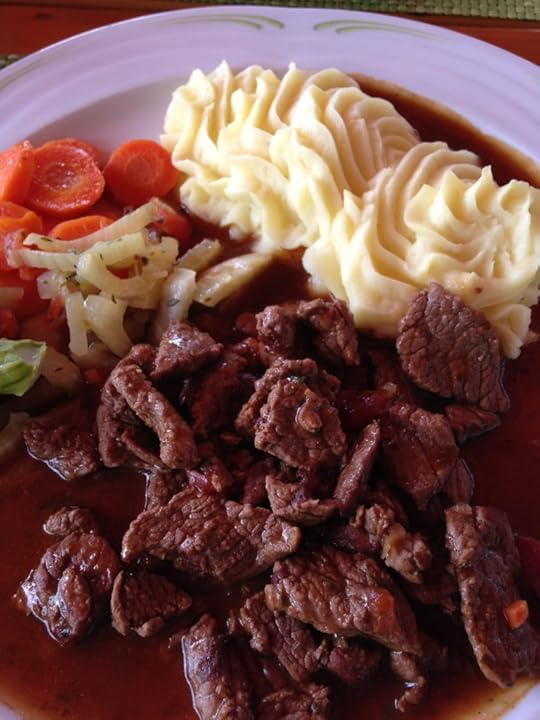

Eating boar…as in the pig…in Lichtenstein….no headache issues there!
Guess what? Any meat, regardless of color, with fins or legs, that was inorganic, was triggering migraines. It was then that I learned about the US processing requirements and usage of…get ready for it, chlorine washes for chicken, ammonia for meat processing, carbon monoxide to keep the color of the meat an even red (because really, would you want to eat a steak with uneven coloring?) were all contributing to the issue. Read more in this article from a reporter who covers the food processing industry, and this doesn’t even get into all the nitrates that are used in the US. More on nitrateshere.
U.S. versus Europe
When traveling (and living) in the U.S., I avoid eating meat at any restaurant because I hate to hurt. Contrast with Europe. Due to their wonderfully militant stance on anything mutated or chemically processed, I can pretty much eat any thing I want without so much as a twinkle of pain. It’s divine. But that doesn’t mean I won’t gain weight or spend a crazy amount of money on food. As such, I apply my lunch rules, with a slight modification. I will have protein on my salad, fish or any kind of meat that’s local.
Oh! and the chocolate. Don’t get me started. I can barely eat any chocolate made in the U.S., but I’m in heaven overseas because it lacks all the bad stuff that’s filling up our stores here. Translation: I can literally eat 2 huge chocolate bars of any kind–Swiss, Belgian, Czech- you name it- and a) I don’t get headaches and b) I don’t gain weight!!! I kid you not. It’s unreal.
What to avoid
Soups. Soups
usually have a lot of salt. If you want your face and body thin the next day,
avoid the soups unless the server can guarantee the chef isn’t using a
salt-laden bullion base.
Breads. What’s the point of working out and crunching sit-ups if you look like a four-five month pregnant woman the next day (regardless of your gender)? The note here is the same with chocolate. I can eat breads galor in Europe without headaches or bloating, but not in the U.S.
Note: Breads turn into simple carbs, which means sugar. Often, a woman will get a UTI on a trip and wail “but I haven’t been eating lots of sugar.” When I ask about break, she’d admit that yes, lots of breads, pastries and the like. Think of that as poison to the system, and running to the bathroom in pain is not what anyone wants or needs on a trip.
Tip: If you do get a bladder infection and don’t have access to a natural remedy, prescription or doctor, do two things. Drop the sugar in all forms immediately (breads, alcohol and deserts). Get a couple of lemons and use half, or a whole, in 8 oz of water. Drink as much as you can…16 oz, 32 oz with as much lemon as you have or can stand. It will push the evil out of urinary tract and out of your system. This simple, home remedy has saved my little self on many occasions.
Overload of dairy. Puffy face and bloaty belly. Two things that should not be in the same sentence, or on your body. I read a piece on the actress Eva Longoria a year before she actually was pregnant, the magazine proclaiming her bulging belly was the result of becoming pregnant by her new husband. She laughed and said “No! I just ate a lot of cheese the night before.” You and I may not be globally famous, but that doesn’t mean we want to be bloated in all the wrong places.
Absolute Must do: Flush that body
Drink water. Lots and lots of water. This doesn’t mean you
risk your sodium levels collapsing, but you seriously need to have a gallon a
day. It will wash out and wash away a lot of culinary evils. Plus, if you are
downing lots of sugar, either by sodas, alcohol or desert, it will lower the
risk of you getting a bladder infection, which is most often triggered by too
much sugar in the system.
The mother-of-all aids: Sleep
How many times do we need to read that 8 hours of sleep is critical for metabolism and weight loss or maintenance? The only thing I will add is that in my experience, it’s not only the length of sleep. When I got to bed is at least as critical is the length of sleep. For example, when I sleep from midnight to 8 a.m. I’m groggy and feel terrible. When I get to bed 10 p.m. or early, I wake up and feel energic, happy and full of life. For most of the week, 6 our of 7 days, that’s what I do. Yeah, I might have a late Saturday night here and there, but I value productivity and joy; without getting to bed at a good time, I’m not either of those, which makes for a less than happy homelife. It’s exacerbated when traveling.
Note on the cover photo: that was shot at a convenience store in Prague, Czech Republic. Entire rows of chocolate….bliss.
April 26, 2019
Tervuren, Belgium
Brussels is known as a political hot center, home to 19 police forces, each using a different language, a great botanical garden and shopping downtown, but what’s not publicized across the Atlantic is the municipality of Tervuren, located in the Flemish Brabant province of Belgium. It’s a shame too, because history, aristocracy and nature–along with inexpensive accommodations–make this town a must-see in our travel itinerary.

Tervuren: What and where
But don’t let that little factoid scare you off. It’s perfect for travelers who want the proximity of the nearby cities in the summer, (a category in which we belong). The town butts against the Tervuren Park, also known as the Empress’s Park, a multi-kilometer destination so big it’s easy to get lost. Yet, it’s so safe, we feel like it’s Idaho. People walking the streets at night, taking strolls on the neighborhood and of course, crossing in to the Park that stretches for miles.

Another park? Really?
If it was “just a park,” I wouldn’t bother writing about it. But this is something to behold. Sun-lit gravel paths stretching for miles are separated by long, rectangular waterways, home to multiple varieties of waterfowl. On the other side of the water, the trails are paved, drawing bikers who race along the paths at a training clip. Shooting off these manicured lanes are dirt trails through the woods. It’s downright “shire-like,’ because only in the Hobbit movies have I seen trees to high and dense in a forest. It’s actually rather spooky, and one of my girls (6 at the time) asked if an Orc was going to come out. “No, Robin Hood lives here,” was my reply, thinking the analogy a little happier than a blood-thirty human-killing fictional character. The downtown of Tervuren lines one side of the park, allowing for waterside dining, strolls down the paths and a little (not much) local shopping.

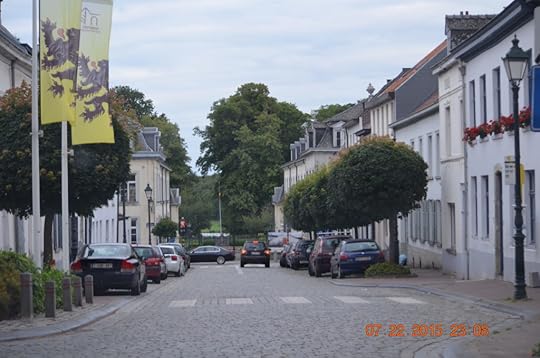


The Empress’s Palace in Tervuren
As we were making our way in and around the park over a period of our ten day stay, we frequently walked by the Empress’s Palace. The story itself (Emperor builds massive structure for favorite daughter) and size of the park just makes any parent say: wow. Daddy really loved that girl.



Africa in Belgium
Indeed. The massive Royal Museum for Central Africa, simply known as the Africa Museum, is located right in the park. In the 1800’s, the museum was opened by a King Leopold II, who had conducted on a years long effort for colonization. What originally focused on the Congo gradually expanded over the decades (yes, this is a dramatic simplification. Read more here), the museum and research functions of the museum attracted scientists and researchers, contributing to the initial prosperity of the region.

Note: It was closed for a 5 year renovation and reopened in 2018, so you are good to go. Where to stay? I address that in a separate blog on our accommodations. Think two-story, five bedroom house, pool, ten days, $1,000. Yep. Love Tervuren.


April 25, 2019
Vienna Amusement Park
Not, it’s not a palace or museum, but if you ask my kids, they will tell you that Prater was not just the best part of Vienna, it’s the only destination they want to revisit within the city. Not surprising. It’s was a short walk from the apartment we rented and was nearly empty at around three in the afternoon. If you want a change of pace from restaurants and shopping for furs (off season in July of course), go visit.
Adults and kids
I’m a thrill seeker, I admit it. For those of use who want
to hang up side down like a bat going 100 mph for brief spurts, at least one
ride offers this experience. I’m sorry to say I’ve forgotten the name of the
ride (did I black out?) but you get strapped in while upright, then it rotates
you so you are literally parallel with the ground, about three feet up. From
head to toe, you are horizontal, and then the fun really begins. My advice is
this: build up and save all your fear, tensions, anger or angst and when the ride
begins, be like Anna in Frozen and just let it go. Trust me, your screams will
blend in with the others.
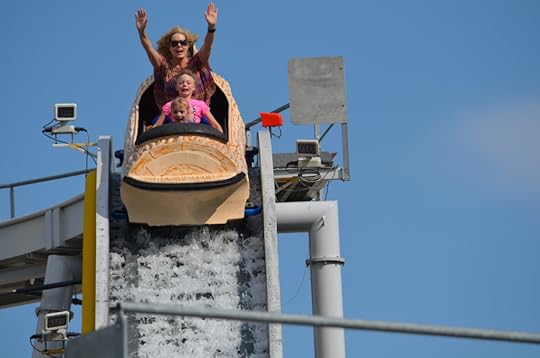
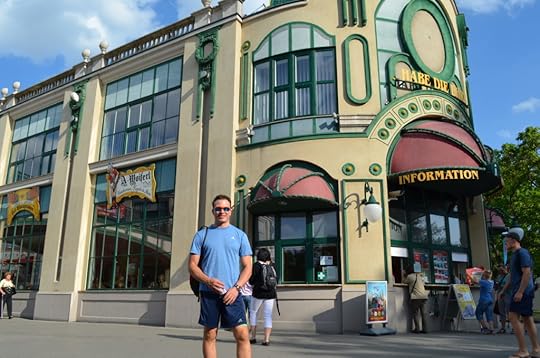
When you are boiling up from the heat, walk five minutes to the water rides and let your inner child go (e.g. raise your hands). The splash is worth second ride–and with the lack of lines, we just got off, walked around the end and got ride back on the ride.
A note of warning- most of the rides do have an age or height restriction, so check your kids before you pay the money. Yes, lots of rides exist for younger ones, but then you are split with the rides between older and younger children.
Best time to go
We learned after the fact that 3-5 p.m. are the best times to go, and this is what we’d done, but it was unintentional. We looked out our apartment, saw the massive Ferris wheel and said “let’s go!” Of course, it was during a heat wave and we were seriously hot, but the park was empty. Just as we were leaving, about two hours later, a breeze picked up, the sun was going down and the crowds started to clog the lines.
The giant Ferris wheel is 65 meters tall and you should take your camera, because you can take incredible pics of the Danube from the top. A Madame Tussad’s Wax Museum, a trainride and the Planetarium.
We all loved the Vienna planetarium, where we watched an Astro show. Since I didn’t take pictures within the planetarium, read more about it here. All my kids recall were the thousands of stars from the laser lights beaming all around.


Trains and bus lines stop right in front of the park, so transportation is easy. I’ll also point out that the side streets to and from the park are lined with unique restaurants, one with a banyan tree in the center. We happened upon it, had a great meal and now you will hate me because I can’t recall the name! But I will say the owner told me it had been there for 20 years, so I imagine it’s there now.
April 19, 2019
Waterloo isn’t just a song
“At Waterloo Napoleon did surrender…oh yeah….And I have met my
destiny in quite a similar way…”
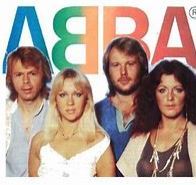
ABBA was before my time, but the long-lost lyrics of Waterloo came rushing back as we drove up to “The Waterloo” in Belgium. Did you know the battle of Waterloo is actually in Belgium? Neither did we. In our ignorance, neither did we, but before I digress upon my lack of education (can I blame that on age?) let’s back up. How did we end up in Waterloo in the first place?
Blame it on the rain
Not to go Milli Vanilli on you, but it really was the rains fault. There we were, in a beautiful suburb of Brussels, looking out the home we’d rented, watching the rain hit the pool, we just couldn’t believe it. After an hour, we had consumed all the chocolate in the house (when one is in Belgium, one must consume copious amounts) and then we got on our phones. What else can we see? Ten minutes later, we had piled in to the car and were on the road.
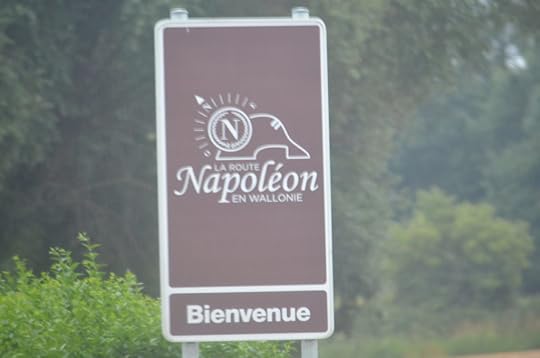

Just off the freeway
Located 30km south of Belgium, Waterloo is off exit 25 from Ring East Road (the Butte du Lion” on the Ring O). What that means is you zip along at European speeds, see the side, take a right, flip around and bam, you have arrived. You are going to notice the craziest scene- a car on a roof, and thanks to my ever-present camera, I took the snap for proof the French have a quirky sense of humor, although Rog conjectured it was some crazy ex-pat American. There is literally no way to get lost on this journey. For new visitors who don’t have a car and trying to figure out transportation to Waterloo, use Rome2Rio for options specifically about getting to Waterloo.
The final battle
Napoleon was short. We knew that. But when you are standing next
to a life-size replica of the little man, you get a full appreciation for the
greatness of the miniature conqueror himself. Just behind the plexiglass
covered timelines stands the grass-covered pyramid-esque monument in the
background. Tip: go an hour before closing or it’s like the Coba pyramid in the
Yucatan. The security guards don’t let you start because they know you’re
inclination to take selfies at the top will result in the site being open
another hour.


Why should you go?Why you should go?
If you aren’t a history buff (which I am) you may see Waterloo for bragging rights. How many people have you ever met who can say they’ve been to the place where the French forces, led by Napoleon Bonaparte, fought the coalition of British, Belgian, Dutch and German? A lot of people recognize the name “Duke of Wellington” but don’t always know why. It was he and Gebhard Leberecht von Blüche of the Prussian forces who led the battle and won. In all, 250K men from seven countries fought, 11K dead and approximately 33K wounded in what’s considered the largest and bloodiest pre-twentieth century battles.


Climb to the top & the Museum
The Butte de Lion, or The Lion’s Mound and panoramic painting of the Battle of Waterloo are the main sights to see on a day-trip to the battlefield (Champ de Bataille). Smaller monuments are scattered around what has been returned to predominantly grass fields. The museum has a 3D movie and lots of artifacts.
Food and parking
The parking is free and right on site, no long-distance walking. The cafeteria is modest but the food perfect as always. It never ceases to amaze (us Americans) that even the dingiest road-side stops in Europe offer fresh mozzarella, prosciutto in a panini sandwich which is better than most of the higher end restaurants in the US.
Local eateries and Monasteries
True to form, we finish up at Waterloo and decide to explore. For the next hour, we drive up and down the backstreets surrounding the battlefield and found restaurants and a monastery that weren’t even listed in our guide books (or Internet). I love that; French food and historical buildings, both hidden except to the locals.





The strange weather of Belgium
While it poured in Brussels, it only drizzled at Waterloo. As we
left and decided to explore the surrounding area, the rain stopped entirely. It
wasn’t until we started back to the city, the rain kicked in. When we returned,
we asked a few locals of the weather. You know what we learned?”
“The weather is a lot like Seattle, Washington,” an older man
said. Rog and I just stared in wonder and disbelief, because at the time, we
were living just outside Seattle.
“Is it always like this in the summer?” I asked, keeping my face
straight.
“Always. Raining and overcast with some sun breaks.” Huh. No
wonder we’d gotten a five-bedroom house with a pool for so little! (another
topic for another blog).
Rain or shine, Waterloo is a must see destination if you are anywhere near Brussels, and frankly, it’s so easy to get to from Cologne and Aachen, Germany, or a quick drive from Luxemburg and even Lille, France (great shopping! More to come on that).
April 17, 2019
Be brave & explore: rent that car
“What?
You rented a car? You must be crazy.”
My parents just about had a heart attack when I said we’d driven from Puerto Vallarta to Guadalajara, over the hills and through the desert to see the zoo, fearing we were going to be kidnapped along with our daughters. I related that we’d arrived at the zoo and ate the churros we still claim are the best in the world. We also got lost in the suburbs on the way back, found a canyon that’s larger than the Grand Canyon right off housing community and met wonderful townsfolk in an artsy enclave. That’s been our experience around the world; adventure and the unknown, merging together to give our trips meaning. It’s also made me a car advocate for seeing the most in the least amount of time.
 Entering Guadalajara
Entering Guadalajara Cathedral in the city
Cathedral in the city stopping by a museum
stopping by a museum it was Christmas at the zoo
it was Christmas at the zoo the white tiger
the white tigerwithout a car, we would have missed all these sites….
Face the fear
For
the first ten of our twenty years of marriage, we took cabs out of fear and the
convenience factor. We truly thought those who rented cars were, in fact,
crazy. What changed our mind was our increasing desire to go places cabs wouldn’t.
We were pushed over the edge when kids arrived.
Getting
lost, unfamiliar road signs and parking are the top of all the concerns voiced
about car rentals. Road signs can be learned easily enough (thanks Google), and
taking a wrong turn is a part of the fun. In fact, this has resulted in seeing
some of the most amazing destinations we’d never have located on our own. And
parking? Bah. In Milan, a city that we’d been told was impossible for American’s
to navigate, we used Google Maps and had no problem finding the Duomo and
getting a spot two blocks from the Duomo Cathedral (that part we found on our
own).
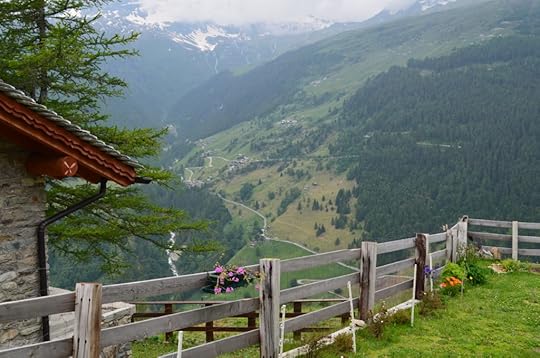 Crossing over from Swiss
Crossing over from Swiss 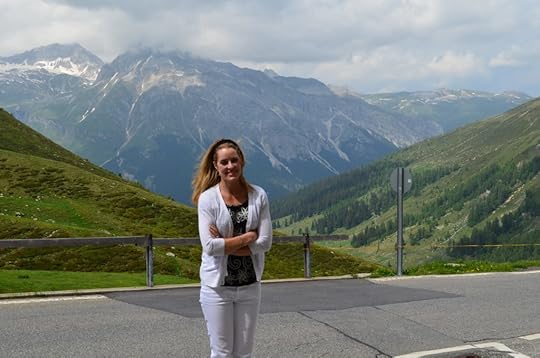 to Italian Alps
to Italian AlpsWhat’s the worst that can happen?
Tickets and fraud. When you don’t read German, tickets will happen. We’ve received more than a couple at castles or destinations because we didn’t properly understand the signs for permits (and didn’t bother ask). Had we used Google translate (or heaven forbid, asked someone who speaks better English than we do), we could have saved the ten bucks. Regarding fraud, our singular bad experience came about when a front desk worker at the rental office in Frankfurt decided to steal our credit card. The silly boy started making purchases about the time we drove off the lot, but was apprehended a few days later.. In 20 years however, that was the lone instance of pain, and it was rectified with a few days.
A few learnings
In Mexico, the rental policies are nuts, because you are expected to pay all sorts of premiums at the counter (even with Hertz, Avis and the others). Further, they require the credit card to be charged authorized for insurance, and security, which can increase a standard $400 for a two weeks to $3,500. No kidding. If you don’t have this kind of room on your credit card, you will be in a bind. Otherwise, here’s how the money breaks down. Tip: most credit cards cover car accidents, so we never purchase insurance. Check with your credit card company.
Yucatan Peninsula/Cancun Area
Cab from any one of the Gold Coast hotels, Isla Blanco or Punta Sam to town: $30 one way (US), round trip, $60.00. If you are going further south, tothe famous Playa del Carmen, tack on another $40 ($20/each way). For a single night in to town, it’s easily $100. Compare that to renting a car, which you can drive to Tulum (2.5 hours south), Chitzen Itza (3 hours west) or anywhere else, and you have already come out ahead.
Cabo San Lucas
This
is one place where we found a car is NOT necessary, but this is because our
lifestyle during our visits is….lounge lizard. We aren’t going to golf courses,
visiting the dunes, or eating anywhere we can’t walk to. So the car we rented
(once) stayed in the hotel except for the trip to and from the airport. A total
waste.
Puerto Vallarta, Suyulita, Ixtapa, Zihuatanejo
We always get a car now, but in the early days, (pre-kids) didn’t bother when in PV, because the cab ride was 5-7 minutes to downtown. Once we started staying further from the center, we got a car. For the other three, yes, cars, always.
Europe
Of course, nothing compares to a train ride through the Alps (the journey isn’t even possible by car), and you still need to take a water taxi in Venice or a boat tour on the Danube to see the buildings from a different viewpoint, but these are not every day occurrences. Yet that leaves several dozen countries to explore with four tires. With open borders, the only thing you need to worry about is a full tank of gas, although a map is helpful.
 from Zurich to St. Moritz
from Zurich to St. Moritz Switzerland to Italy
Switzerland to Italy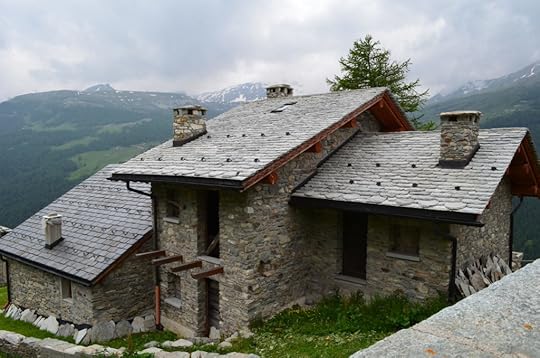 seeing it all by rental car
seeing it all by rental carA few tips for renting a car in Europe
The pick-up location makes all the difference in the world. The same car picking up in Calais France (for 5 weeks) is $3,400, whereas that car is $2,400 in Frankfurt, Germany, but $1,200 in Aachen, German. Guess where we are picking up our car? And it’s not a Volkswagon. It’s a four-door 5-series BMW touring model.
I’ll give you another example. One year, we picked up a Volkswagon Golf in Zurich, Switzerland for two weeks. Price tag? $1,100. The next year, we went for an Audio Quatto, but go it out of Frankfurt, Germany for 4 weeks. Total price with tax? $1,098. Are you seeing a trend here? Automobiles, for the most part, originate out of Germany. If you rent in another country, you are going to pay a LOT more. While we have used Hertz and others in the past, we find amazing deals with Sixt luxury car rental.
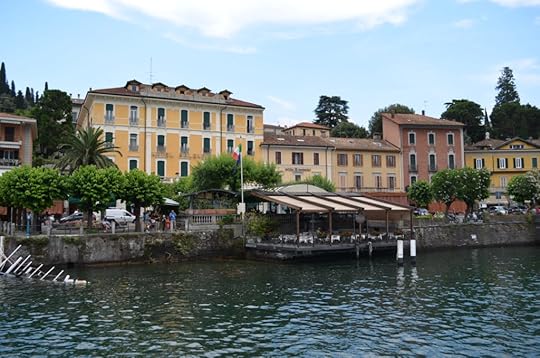 Bellagio by car
Bellagio by car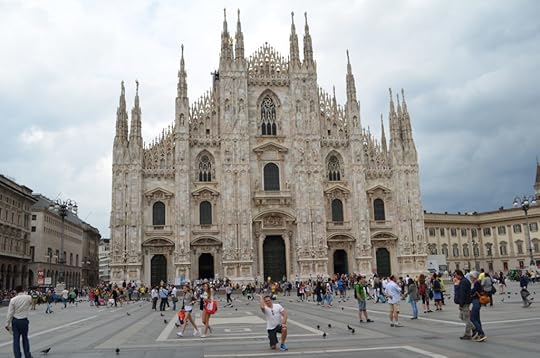 Milan… @3.5 hrs from Bellagio
Milan… @3.5 hrs from BellagioLast
example. This year, we decided to see a bit of England, and are landing in Manchester,
getting a car, driving over the channel. We are dropping the car off in France
and taking the train up to Aachen. Even with the cost to rent a car for two
days ($120), then the four-hour train ride ($600), we are still saving over nearly
$1,500. Is a bit inconvenient? Only if you think the train ride through France and the Black Forest of Germany is ugly.
The
summary here is to not be fearful of renting a car. The benefits dramatically
outweigh the risks or issues you may encounter, so on your next trip, be brave
and start exploring. Your future self will thank you!
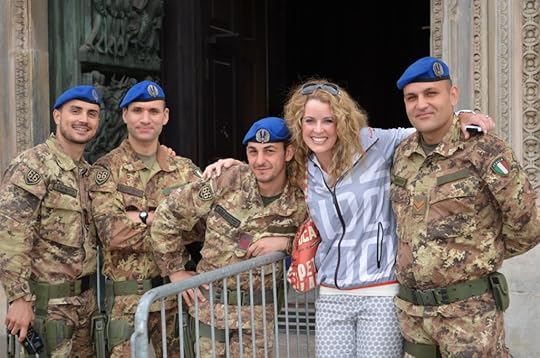 The truly happy smile of a girl with a car who is seeing a lot, including the handsome security staff at the Duomo Cathedral in Milan
The truly happy smile of a girl with a car who is seeing a lot, including the handsome security staff at the Duomo Cathedral in Milan*Products and services mentioned are not sponsored by the respective entities. This is an independent editorial review based upon real experiences paid for by the author.
April 16, 2019
Quick: close your eyes
“Quick! Don’t look!” Those were the words I mistakenly said
to my girls, when driving alongside a river in Austria. What I meant to say was
“quick, turn your heads,” but the better comment was to have kept quiet.
You see, while most Europeans are immune to nudity, not even registering a piece of uncovered flesh, us Americans are much more sensitive to those things, and thus, the necessity for writing this blog. It was this singular river-journey that I learned how to handle the unexpected with grace and a bit of education, perhaps saving another parent from making the mistake.
 View as we drove outside town
View as we drove outside town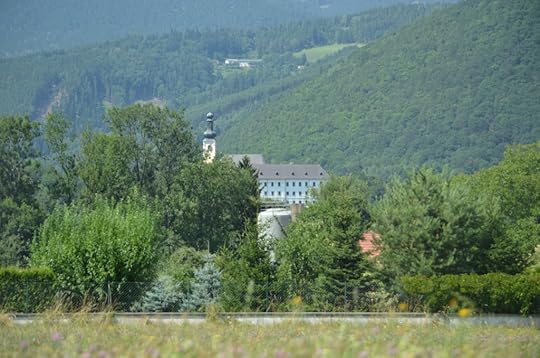 A distant chateau
A distant chateauThe hottest day
That’s where it started. On a day trip down the 56 south of Vienna, return it was over 100 degrees, the July heat practically killing the car’s air conditioning. On a lark, we went to Gloggnitz in lower Austria and started following a few motorcyclists and locals who seemed to know where they were going (we are adventurous that way). The straight road curved as the scenery changed from concrete to lush trees, the uphill climb cooling the air. We rolled down the tinted windows to get a better look and lo! There it was. A whole line if bar butts, four in a row, and male.

I uttered the now famous line, which made both girls (then 6
and 10) lean out the window. “Mom, is that a butt?” My six-year old asked. “What
happened to their bathing suits?” My older daughter went silent, her shock registering
in the fixed stare one has when going by a car accident.
Luckily, the rational me kicked in (as opposed to the mom-me).
“It’s Europe,” I replied. “They do this here.”
“But Mom,” my oldest started. “There are more people on the river.”
I looked. “Yep, and some are even wearing bathing suits.”
It was then that Rog and I had the quiet moment parent’s
share when the truth table has been pulled out. We were either going to live
the European experience or eliminate half the things we could possibly see.
“We’ll do our best,” Rog said in an undertone.
“No naked men,” was my threshold. And with that, we continued up the river until we saw a place where the men were clothed, but not all of the women.
The invisible man
Kids are interesting. If you don’t make a big deal out of
something, they forget it even exists. So it was that we parked the car, quickly
changed roadside when it was clear, then made our way down to path. The Alpine
water was freezing, the water crystal clear, and the other visitors rare. Yet a
few women were topless, but they were mom’s who had clearly breastfed their young
children and struck us as pragmatic instead of exhibitionistic. It was very hot:
why wear more clothes than one had to?
The kids looked once, more out of interest, then moved on. It simply was a part of life, a part of nature, exactly how it should be.

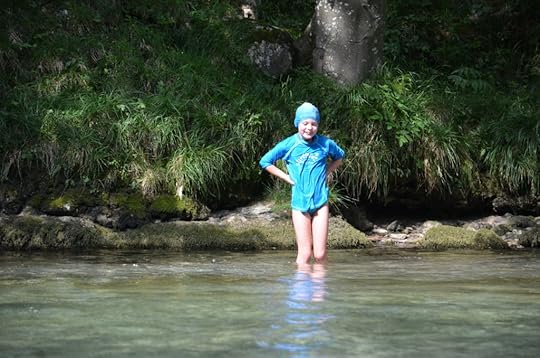 Testing the depth
Testing the depth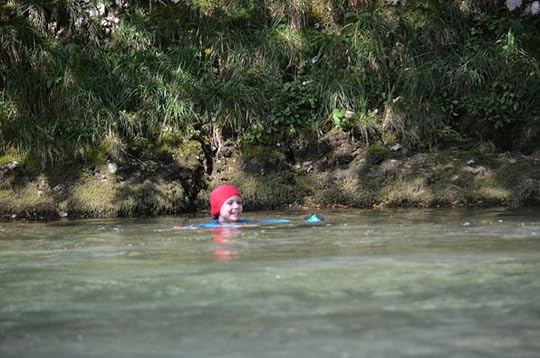 Cold and slow moving- perfect
Cold and slow moving- perfect My favorite go-to Athleta hat
My favorite go-to Athleta hatThe return trip
It was a good thing perspectives had changed, because two
hours later we were driving back in to town.
“Mom,” my ten-year-old says from the back. “I just saw a man’s
penis. Two, actually.” I can’t help myself. I look out the window. Sure enough,
we were passing the spot on the river from whence we’d come, and two of the four
men was now on their backs, sunning themselves.” The image was gone in the blink
of an eye, my husband’s hand on my leg gripping with humor and angst combined.
“Yep,” I said. “Everyone needs to get a tan.”
“I guess,” my daughter said, already looking down at her book.
“What’s for dinner?”
We did our best to shield the girl from egregious displays
of nudity, but honestly, it wasn’t an issue. The rest of the trip, three weeks’
worth, were free of comments or looks about what saw, or rather, didn’t see.
They came, played and were focused on having fun and the beauty around them, exactly
as it should be.
April 13, 2019
Salzburg, Austria
Who didn’t grow up listening to the Sound of Music, dreaming about one day, floating along the green hillsides, twirling, arms out, singing “the hills are alive…” No? Doesn’t resonate? What about walking along the waterfront, looking at the muted, yellow mansion where the fictional Maria met her beloved Captain von Trapp? No? That’s what my husband also said
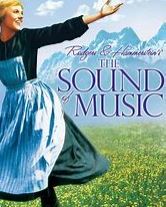 Channel my inner Maria
Channel my inner MariaThus, despite my life-long bucket list dream of seeing either hill or house, we opted for the Mozart residence and the Fortress Hohensalzburg as the two, primary destinations for our first trip to Salzburg. In our upcoming trip, we intend to take in more locations in and around the area, including Lake Mondsee, but we are going back to the two destinations because we simply can’t get enough.
Fortress Hohensalzburg
This imposing castle on the hill wasn’t one to pass up. Like Lake Mondsee, we found it by chance; the focus on Mozart and the Sound of Music tours changing the moment we caught our first glimpse of the enormous, white structure. Rog immediately started looking for street parking at the base of the Fortress, in town, and got lucky. Our walk was only five minutes to the base of the hillside entrance.
 View from the street
View from the streetTrain or tram
Rog and I were in a funny spot at this point in time, because I was realizing that with our limited time, I’d miss all the Sound of Music stuff. My fury grew as he expressed disbelief I would want to visit sites from a musical instead of a real fortress (do you see the marital tornado brewing?) Good thing that getting to this fortress offers both a tram and a thousand-plus long stairway, because we chose the stairs, sweating out our issues by the time we reached the top. Inside and out
Inside and out
Once at the Fortress, you can take several different routes
to see the expansive structure. Cafes and mini-restaurants are located on
multiple levels and areas. The fortress has many landings offering panoramic
views of the valley’s below. Restrooms were plentiful (thankfully) but it was
quite hot; the only shade was found in the restaurants. After this trip, we purchased
combo water-spray bottles to keep us cool.
 the thoroughfairs
the thoroughfairs  original walls
original walls the size of the Fortress is tough to grasp, even when you are looking across the buildings
the size of the Fortress is tough to grasp, even when you are looking across the buildingsEven though the trams were full, the main fortress seemed almost empty because of the size of the area, reminding us of Czesky Krumlov in the Czech Republic. Yet, unlike Krumlov, Fortress Hohensalzburg has a mercantile, selling some of the best products we’ve seen. Unlike the silly shirts, hats or other items commonly sold, this mercantile had homemade soaps and honey, cream and wooden crafts. We spent nearly as much time in the store picking out items as we did the Fortress (well, almost).
 try to eat with this view
try to eat with this view lots of foot options
lots of foot optionsMozart
For thirteen dollars, we paid a visit to the residence of Wolfgang Mozart. While the inside is identical to the pictures on TripAdvisor or elsewhere, nothing replaces walking through the very home where Mozart created many of his masterpieces. The surrounding area is full of eateries and gardens, so one doesn’t feel obligated to rush in and out of the neighborhood. Parking was easy to find as well (right across the street).
 street view of Mozart’s home
street view of Mozart’s homeSalzburg Cathedral
Mozart was baptized in this cathedral the day after his
birth, but it was historically relevant long before. The first Dom was recorded
in 774, a fact completely lost on my girls because the center was hit by a
single bomb during World War II, and has been largely reconstructed. Still, it’s
a beautiful structure if you are in to comparing cathedrals (which we are—it’s
sort of become a trivial pursuit-type family pastime…which one do you like
best? Why? What do you think of the pipe organ? The tiles were better…. you get
the picture).
Depending on the month and week/day, festivals about in Salzburg, but we seem to miss most of them, but fortunately, not all. Check the calendar for your trip because the local food and culture really come through during these festive times.
Parking
We had great luck with parking around the cathedral. Street parking a two blocks away made the short walk quick and easy. In fact, no matter where we went in Mondsee or Salzburg, parking was no problem. In Vienna, we didn’t bother look for street parking, we go straight for the closest garage and call it a day.
Salzburg summary
This small-ish town has much to see and experience, but these were our higlights, and the best for kids
Snoring solution: How we became a traveling couple (again)
Snoring solution: Who we became a traveling couple (again)We had a traveling draught lasting nearly six years; the
time it took to have kids and find an anti-snoring solution that worked. For
those ADD readers who don’t have the time or desire to read the context, the
failsafe is Snore
Guard. Less (and more) expensive options are available (see below) but this
is an economical way to cease snoring and get traveling.
The backstory
All was well in my marriage for the first six years. Only
later, when the soft bubbles turned into stones craping together did I realize
why: we were young, the room was always a brisk 65 degrees, and I didn’t have
children. Post children, my second-sense, ever-alert state came in to being,
and the house was a lot warmer (72 is warm for us). Heat begat a new level of
sleep restlessness, and I feel and hear every turn and bump Rog made throughout
the night.
Enter the solutions
Because Rog and I always traveled for business pre-kids, we
saw parts of the world, but separate, not together. When our eldest daughter
turned three, I was taking her on weekly trips to Arizona, so she became a
little road warrior. It was great—as long as Rog wasn’t with us, and in the
same room. For seven years, he found, bought, used, and discarded every…single…snoring
solution on the market, from the strips to nose sprays, along with various
mouth pieces. The early products failed miserably (but some were great for cleaning
out the nose pores), and the mouth guards pulled his lips or cheeks, and even
some strapped around his ears. Rog thought he’d found the motherland when two
fishing buddies told him they’d purchased the same “mouth-covering-oxygen-pushing,”
device. The only catch with that was the size, the inconvenience (you must
train yourself not to turn over during the night) and the non-sexy appeal of your
husband sitting there, looking like he’s come back from the operating room
table.
The ultimatum
In 2015, we’d had a sudden realization of our mortality when
two friends unexpectedly die. We began to change our priorities, and that mean
giving our family experiences, not things. The big catch was this: I could not,
would not, travel with Rog if he didn’t fix the snoring issue. My max was three
days without sleep, which limited our travels to four days. Further, I told him
we needed a few shorter “test trips” before we launched off on a big journey.
Life changer
Armed with the carrot of a vacation, Rog applied his own
stick: He arranged not one, but eight trips in a single year. He determined he
wasn’t going to leave this life without being with himself and “his girls” as
he calls us. I feared for my sleep (and my life) as he set about trying and testing
the various types of snore guards, for he had shut down the
oxygen-breathing-mask outright.
Rog went to his vault of all wisdom: his hockey buddies.
Some lacking critical teeth, many of a large girth, which makes rolling over
(reducing snoring) challenging. They swore by the Snore
Guard Pro. Rog goes out, buys not one, but two. They mold and meld to the
teeth, holding the jaw open just enough to allow the air to pass through. This
is all it takes to have a wonderful, blissful night of sleep.
The benefit is the cost. It’s about $90 bucks, easy to customize and use. The downside, according to Rog, is that it creates a soreness in the jaw muscles, which takes some time to get use to. It wasn’t uncommon for him to remove it half-way, or three-quarters of the way through the night because his jaw hurt. Nonetheless, on our 3-4 day trips from Alaska to Arizona, where the temperature varied and we were with and without kids, the result was consistent: snore-free until he removed the device. The device also comes with a small case so the notion of the guard and associated mouth juices and grunge isn’t foremost when you see it.
 the case
the case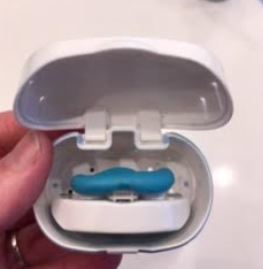 top view
top view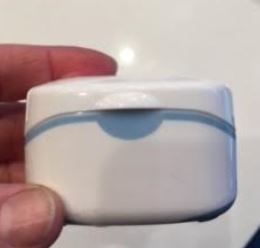 size comparison
size comparison
Avoid the non-molding
versions
While cheaper, by 30-40 dollars, the versions that don’t allow
molding not only hurt, according to Rog, but barely work. The size is also an
issue, because the two primary versions are deeper and wider. “I threw away a
hundred bucks trying to save forty,” was Rog’s conclusion.
Also, beware the “night guard,” phrase. This tends to imply
a clear or colored teeth guard similar to what hockey players wear to protect
their teeth. It’s designed for clenching and grinding, not snore prevention.
This is another way to throw away good money (which Rog did on his search for
sleeping nirvana).
Improving on Good
In search of the “ultimate” snore guard, Rog visited his dentist, convinced a better solution was available. Sure enough, for the bargain basement price of @$400, the dentist would create a custom version made for his teeth. Grateful for the advice, but unwilling to pay that type of premium, Rog did what just about every human with an Internet connect did: he went on-line and found a product for half the price, roughly $195. Once it stood the test of our next travel trip, he purchased another, “just in case.” A good thing too, because these little things are easy to make and misplace.
The key: After spending further hundreds of dollars, Rog determined that the BEST product is the one that is “upside down.” It holds the top four teeth (only) in place, resting the base on the lower teeth. Because he doesn’t want his mouth put out for public viewing, I’m willingly showing you examples in my own mouth, using his mouth piece. (Appreciate those choppers!)
The proof
Two days before we headed to Europe, sans kids, for two weeks, Rog tried out the new device. Perfection…and for two weeks, he snored not a single time. That was the beginning of emancipation from snoring purgatory. Four years later, our family is poster picture for mouth guards that work, because without them, we wouldn’t be traveling, at least not together.
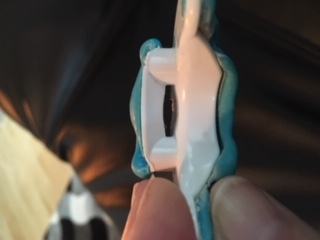
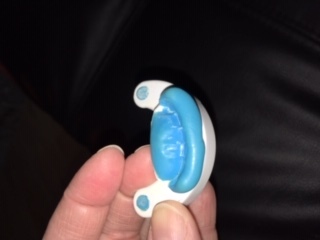 the top
the top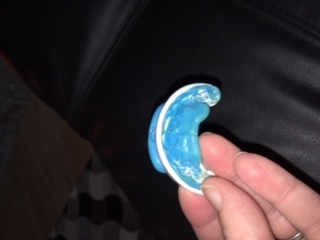 the bottom
the bottom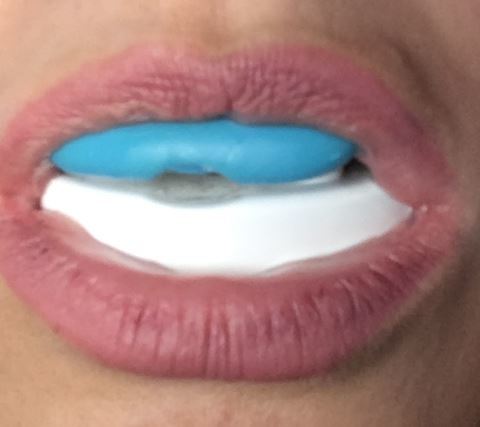 inside the mouth
inside the mouth
April 12, 2019
Lake Mondsee, Austria
We were coming from Vienna, driving to Salzburg on the A1,
looked out the window and saw this big lake. “What, another lake?” I thought to
myself, but the girls immediately pointed out the waterslides, mid and
high-diving platforms and sailboats. Rog looks at me. I look at him. He takes
the next exit.
Where is Lake Mondsee & why should you go
It’s outside Salzburg roughly thirty minutes. Perhaps we
wouldn’t have stopped had it not been nearly 100 degrees as a heat-wave had hit
that part of Europe, nor had we had an extra day on our schedule. We were so
glad we did. The top three reasons to make the drive are activities, food and
price.
 Lakeside
Lakeside Activities
From sailing to swimming, the compact but highly fun waterpark and lakeside dining, Lake Mondsee is relaxed and casual, the antithesis of so many lakes in the area. Unlike Area 47, which is more for thrill-seekers, Lake Mondsee, especially near the waterpark, is geared for families.
The high dive platforms are fantastic. Unlike the US, no restrictions exist about age or level of sanity. My 6-year-old launched herself off the mid-platform, about 15 feet up, and my older daughter, 9 at the time went off the 25 ft high platform. Like a numbskull, I did the same, but once did a handstand, landing flat on my back. Yeah, that knocked the wind out of me, and my ribs were actually bruised, which made for some painful walking the next few days.
Waterslides are easy to moderate, not the screamers of Area 47. Even the adults were going up, down in and around. We would have rented a sailboat, but the wind was absolutely non-existent. Perhaps this upcoming trip we will get lucky and get on the water.
 short but fun for kids
short but fun for kids Off the top!
Off the top! wide enough for crew
wide enough for crewContrast this to Area 47, which is all about high-impact/thrill, daredevil and adrenaline junkies. As adults, we were completely drawn to Area 47, but the limit is age 12 for all rides and in the main area, competent swimming. So, if your kids are younger, or you want a more relaxing experience, the Mondsee water park is the one to hit.
Food
Several restaurants of differing prices sit waterfront, the foot excellent (we went to two of the three). Traditional Austrian dining is mixed with hamburgers and French fries; all casual dining.
Pricing
Waterpark prices are low (less than $10 per person) for an all-day park pass, and the parking in the central area was free.
For those wary of traveling due to language
One of the most consistent questions/concerns voiced about our jaunts to Europe revolved around language, and the reality we speak a few words of several languages, but none of them good. Our German is probably the best, and even that is basic. Our response is this: most of the Europeans speak better English than most Americans. It’s never been a problem, except when we are in the very inner parts of a country and stop at a restaurant. Usually, the owner(s) are older, and don’t speak a word. In those cases where the younger generation isn’t present, we simply look at the food on a plate, point and order. Easy!
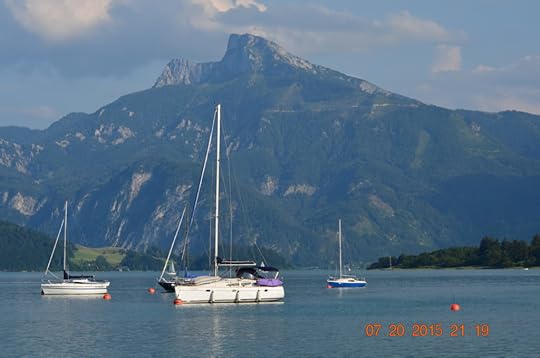 the surrounding mountains
the surrounding mountains a clear, calm (hot) day
a clear, calm (hot) dayBooking a hotel or VRBO
Hotels are plentiful, about 45 in the area, but a VRBO is a bit trickier. We tried finding and booking one six months prior to our next trip, and were out of luck. In general, the area does not lend itself to rental homes. We ended up booking two nights in Salzburg at the Hotel Turnerwirt. It’s small, quaint, local and right in the heart of the town, which is what we look for when we are going to be in and out relatively quickly. The price is also awesome.
Reserve early (at least 3 months ahead)
Since we found Lake Mondsee one afternoon, we decided to spend the night. Boy, that wasn’t fun at all. It was early July, and the only available room in the entire town was at a hotel which was really more of a cross between a hostel and a hotel. In other words, the lobby and rooms were fine, but the air conditioning barely worked and the rooms claustrophobic. Even so, we got up and out of the hotel the next morning, visited Fortress Hohensalzburg and the Mozart residence and then went back to the waterpark.
Mondsee Abbey
For those familiar with the Sound of Music, the inside of the Abbey is the setting for the wedding scene of for Maria and Captain von Trapp. This was about as close as I got to fulfilling the childhood dream of singing “the hills are alive.” It was a short, but worthwhile visit–but the significance, or at least my emotional attachment) was completely lost on my husband and girls.
 Mondsee Abbey was the setting for the famous wedding scene in the Sound of Music
Mondsee Abbey was the setting for the famous wedding scene in the Sound of MusicFeatured image: taken lakeside
April 10, 2019
Managing Migraines for travel and life
This piece is for anyone suffering from migraines, travelers or not. First, know that I have two proven solutions and a third possibility for you, one over the counter, the other prescription and the last involving diet. Second, this is my personal experience, and not a doctor’s recommendation. I write about what I know and what works so you can potentially benefit.
Doubting Thomas
I have to state right up front I was one of those doubting
Sarah’s about the notion of a migraine (as in, what were they, did they really
exist or was it all in the person’s mind?). As I write in my novel, In a
Moment, Lindsey Gordon, the main character, realizes that she “mocks what she
doesn’t understand, and then you get to experience it yourself.”
Relative to migraines, I had this experience first-hand. I
suppose that God, figured forty years of ignorance on my part was enough, and decided
to bless me with migraines started at age 47. For nearly four years, I’ve been
a part of the suffering club. Over this
time, I’ve been able to manage the headaches, and when I’m a really, really
good girl relative to eating I can eliminate them entirely. But alas, I don’t
always have discipline, (I travel! I eat! I’m a slightly eccentric author, and
succumb). Because of this, you, the reader, are going to get the deep dive so
you can travel and potentially a life free of migraines. If this isn’t possible
for whatever reason, you can at least manage your pain so you can experience
all this world has to offer.
Migraine vs headache
Headaches (for me) were throbbing, dulling points of pain,
which varied in location. I could always continue to work at the office,
travel, sleep or exercise, and generally, could rid myself of the pain with a
couple of Ibuprofen (as a side note, Aspirin would make me nauseas. Ibuprofen
didn’t give me that side effect). As the headaches increased in intensity, it
moved to what qualifies as a migraine. Mine have always started with a jabbing
point in my right eye, which progresses to a complete wash of pain over my eye
and forehead. I’d need to lay down, with a cold ice pack over my eye to dull
it, black out the room, and then endure the hours until it retreated, but moved
over to my left eye. The final stage of my version of migraines is that it
moves to the lower back of my skull.
Super fun.
Solution 1: Caffeine pills, specifically, Vivarin
The short-term, immediate and most cost-effective solution
are caffeine pills. In particular, Vivarin Now, before you shout at me
that caffeine causes headaches, and that caffeine withdrawal can actually make
the situation worse, I will agree with you—but only to a point—and even that
has the caveat that if you are really and truly getting black spots because of
your migraine, you are traveling and you need to get rid of the pain, then you
run right into the nearest grocery, convenience or drug store and pick up Vivarin.
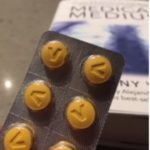 Vivarin strip- 8 per
Vivarin strip- 8 perThis immediate solution was gifted to me by my husband on a
trip to Europe and as I started to moan, he said suggested an energy drink
(which I hate), and I declined. Then he gave me a Vivrin, and within minutes,
the headache eased up.
The
benefit
Caffeine pills open the floodgates blood to the brain. This
increases circulation, reducing the strain on the brain—literally. Thus, when
you take a pill, you are increasing the blood flow and the effects are nearly
immediate. For two years, prior to breaking down and seeing a doctor as the
headaches turned into migraines.
I found that Vivarin worked better than any other brand
available, and I’m not exactly sure why. I’d test out others when Vivarin
wasn’t available, but it turned out that most made me nauseas. I have no
explanation for this, only that my system wasn’t compatible with these other
brands. Trust me, I’d love it if my head responded to all brands equally, but
it just doesn’t. Also, it’s relatively inexpensive and over-the-counter, so you
can freely travel with these pills across borders. Even today, I keep a handful
of tablets in my purses and jackets just in case I run out of my prescription,
haven’t been eating as healthy as I should, or both.
The
downside
Sleep deprivation and “the bounce back headache.”
The first is obvious. The more caffeine you push in to your
system, the greater the jitters, irregular heartbeats and inability to sleep.
This was far more intense for me because I haven’t ever consumed coffee or
sodas, which are two primary sources of caffeine. Because of this, I’d be up
for hours (and hours and hours). However, I learned to address this by taking
two Melatonin pills each night. After about thirty minutes, I’d start to wind
down. For those unfamiliar with Melatonin, it’s a natural supplement. It’s a
godsend.
The
bounce back headache
This was an unfamiliar term to me until the day I filled my
first prescription medication for migraines. After the pharmacist heard my
headache-to-migraine journey, he said, “You will really like these (the pills).
All the benefits of removing the pain without the bounce back headache. Fellow
sufferers and users of caffeine pills can attest that the bounce back headache
can be can be as bad, or worse than the original headache. Fellow sufferers,
and users if caffeine pills as a means to manage migraines know what I’m
talking about. Just as the pills work to immediately rid the headache, if you
go off the pills just as immediately, (thereby constricting the blood vessels)
the system goes into shock, and yes, the headache returns in full force.
The
step-down approach
To combat this, you take a step-down approach, just as you
would with any other medication (or addictive substance, like sugar). For
example, if the headache was mild (e.g. was unaffected by an ibuprofen), I’d
take half a Vivarin. If it was worse, I’d take a full tablet, and for the
really bad ones (pre migraine prescription) I’d take two. As you can imagine,
the headache would be gone, but then I was literally glued to the ceiling,
jittery and slightly afraid with the irregular heartbeats. Once the effects
started to wear off, crabbiness preceded the next headache.
Prior to getting actual migraine, I’d suffer harsh headaches
but I could deal, and I usually could pinpoint the cause: eating too much
sugar, then stopping. Sugar withdrawal has been likened to withdrawal of
serious drugs, such as heroine and meth. In fact, a dear friend who nearly died
from a diabetic sugar withdrawal told me (from the hospital) that the doctors
told him sugar withdrawal is 20 times greater than the closest drug. That said,
I had surgery, used Oxycodone, and as soon as I could, went off it. I was in a
rush not get off the pills, ignored the doctor and went cold turkey (after
about three weeks on the stuff). For two days I experienced headaches, cold
sweats and fever-like symptoms. It’s the closest thing I can compare to going
off caffeine.
If you are going to use caffeine pills as a short-term, quick
fix, then use the step-down approach by gradually reducing your dependency on
the pills. If you started with two pills, go to one, then a half, then a
quarter. It may take a day or two (depending on the severity of what you
started with), but you can still function. This is better than going
cold-turkey and putting yourself in more danger (for irregular heartbeats—jacking
your system sky-high, then dropping like a bomb is extremely unhealthy).
Summary
for the quick fix
If you need a quick fix, are on a budget or honestly don’t
want to take the plunge with a prescription (which I don’t blame you, I
resisted for over two years), then this is a solution that has worked for me,
and may give you relief. Just use the pills properly and know what you are
getting into.
Solution
two: the prescription, Riztriptan
Benzoate
The crossing point for me from Vivarin caffeine pills to
prescription was when even three or four pills weren’t killing the pain. With
that much caffeine in my system, I was having diarrhea (say it with me:
awesome!) and I increasing worried about irregular heart beat. That said, I
didn’t want to become “one of those people” who were dependent on a
prescription. So I tried every alternative I could: acupuncture, every natural
remedy known to man, alternative healing…nothing worked, but even then, my
obstinate, persistent self overruled my rational brain.
It was then that the Big Man pulled out the stops. One day
the migraine was so severe, I’d taken three or four caffeine pills, had gone to
bed, holding two ice packs, one against my eye, the other on my lower skull.
Even so, it still felt like needles were going directly into my eye. All night
I suffered and cried. When I woke, I was blurry, but functional, and somewhat
annoyed I seemed to have a dark spot on my right eye that wasn’t going away. It
was at ten a.m., and everywhere I looked, the same black spot was present. I
figured it would go away, as did my husband, who laid down the law: I was going
to see a doctor. Two+ years was enough.
The doctor listens, examines my eyes and pronounces that the
blood vessels were pushed to such extremes by the constricted vessels that it
literally popped in my eye. In other words, this “jelly” as it’s commonly
referred to, won’t ever leave. It’s here to stay, in my vision, for the rest of
my life.
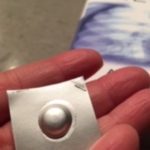 small, individual packets
small, individual packetsThis is the generic version of the brand name Maxalt. Instead
of paying $800 for Maxalt, I pay $10 for Rizatriptan with my insurance co-pay.
However, when I’ve not had insurance, it’s $40 for 18 pills. Can we say massive
savings?
I’ve never used another prescription, I can’t speak to
alternatives. That said, I have friends who use other brand name pills and
don’t seem to have the same result.
The
benefit
The first benefit is that the result is nearly immediate,
almost equal to a Vivrin. When I feel the onset of a migraine (again, usually
over my right eye), I will take one pill. This eliminates the headache, and
while the warning says it induces drowsiness, I’ve never experienced this side
effect, nor have I noticed any others, such as feeling of impairment. Sometimes
I’ve felt a little less energetic, but this hasn’t ever stopped me from
exercising after an hour or two. For someone who went from a debilitating,
two-day cycle of migraine to normalcy, this is nothing short of the Red Sea
parting. Further, as promised by the pharmacist, I’ve never experienced the
bounce back headache, nausea or other issues.
 For international travel, this isn’t enough. You must have the prescription.
For international travel, this isn’t enough. You must have the prescription.
The
downside
Honestly, if you have the money, the only downside is
quantity. Rizatriptan (and all drugs in this category) are in the same category
as Oxycodone, so it’s regulated. That means doctors usually only prescribe 8-12
pills per month. Sufferers know that migraines can happen randomly, and in my
case, were about three weeks of the month. They worked great, but I just needed
more. I was willing to pay for more, but learned it wasn’t an issue of money,
but my ability to actually get more. The only (legal) way to do this was go
back to my physician, which I did. But prior to that, I called my insurance
company.
The
right number
After a (long) discussion with the representative from Blue
Cross Blue Shield, I learned that the reason the initial prescriptions are 8-12
is because “Over the years, statistics have shown that if you need more than 12
pills a month, you have something seriously wrong.” It was explained to me
“seriously wrong,” meant some sort of brain ailment. Well, I wasn’t in that
category, and the woman was sympathetic.
“My migraines were so bad, I had to get shots directly into
my head once a month for three years.” Imagine my shock at hearing this. The
representative knew exactly what I was talking about and told me I could go
back and ask for 18-24. If the doctor signed off, I could get my pills.
I figured 24 might be overkill, but 18 was nearly three
weeks. That’s what I did, and what I’ve been doing for about 6 months now. Let
me tell you this: I’m sweating bullets by the end of the cycle, and I can only
get them the refill on the exact day noted by the doctor.
Summary
for Rizatriptan
Excellent solution, has changed my life for the better, and
in my case, zero side effects.
Solution
three: manage your eating
While I’m thrilled, overjoyed and beyond ecstatic to have my
old life back, I have never been comfortable with the notion of being on pills
for an extended period of time. The alternative choice of shots in my head is
less than appealing, so I have continued to search for a way to naturally heal
my body.
This came in the form of two doctors who live behind me.
Knowing of my migraine journey, I got a call one day from the female, asking me
if I was “open-minded,” and would consider an alternative view of headache solutions.
Of course I said yes, and she gave me a book that focused on healing through
foods. When one is desperate, one will do pretty much anything, and I was at
that point. To make a long story short, I read the book over the weekend,
spending lots of time on migraines and the solutions therein. Very specific
recommendations were made for reduce and/or eliminate migraines. Further, it
listed the primary culprits of migraines, along with inflammatory culprits. The
book is The
Medical Medium by Anthony William, Chapter 10 is solely on migraines, and
page 131 lists triggers.
Triggers
The list of potential triggers is long, and by process of
elimination, I’ve narrowed down my personal “triggers” for migraines. This
includes non-organic meats and sugar: more than a couple tablespoons, two days
in a row overloads my system. Now this may sound like a lot, but it’s
essentially one can of Coke, a bowl of cereal or cookie, or even some ketchup.
Sugar is in pretty much everything, and when you are out to eat (traveling) you
can never, ever guarantee where/how the meat is sourced.
So, did I do? I got culinary religion and pretty much ate
like a rabbit. I continued to have dairy, eggs and the rest of what this world
has to offer, but I cut out meat and sugar, which means most breads, unless I
made it myself. Guess what? No migraines. I’d still have one or two a month,
but nothing like a dozen times.
Benefits
of the food solution
I decided to put a few of the recommendations to the test. I
didn’t use the migraine pills, but instead, juiced up celery, cilantro, apple
and cucumber. That’s all I drank/ate for the space of four hours. After the
first hour, the migraine reduced to a headache. By hour three, it was a dull
throbbing. Hour four, I felt like a million bucks. Seriously.
The
downside
It’s not always possible to stop and juice up! One a trip to
Lake Tahoe, I took my juicer (which I broke down and purchased on sale for $125
vs $300), and for all trips where we have the space and accommodations, I take
it. But honestly, it’s a real pain in the fanny to be trekking the juicer with
me, and I never know if it’s going to creep up. Nonetheless, when I’m home, and
I’m all stocked up on celery etc., this is my go-to solution. Also, “most of
the time,” when I avoid non-organic meats and sugar, the number of migraines
has dropped significantly, which lights up my world.
Summary
for dietary changes
A healthier lifestyle is nirvana, what we all strive to
achieve. If you are searching for a natural route, I would definitely stop and
spend the money on the book 1 and 2. They are worth it. For me personally, note
I said “strive.” I’m not a no-sugar gal, or vegetables only, and because of
this, I know that I’m making a choice to try certain foods, or live on the edge
that may trigger a migraine. In the end, my lifestyle is probably 80% congruent
with my body-chemistry, and 20% living on the edge. For that reason, I have my
prescription handy, and as a fail-safe, the Vivrin. In addition to taking your
camera and book on your next trip, include at least one of these items. Your
head and traveling companions will thank you!



